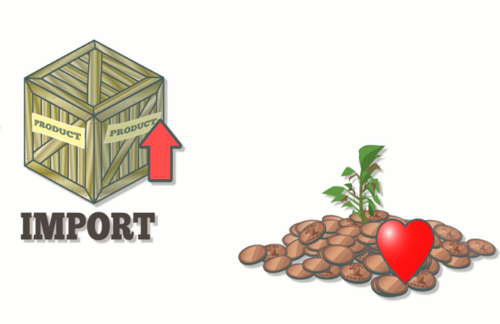THE IMPACT OF NET EXPORTS ON GDP: TRADE BALANCE AND ECONOMIC GROWTH
The Impact of Net Exports on GDP: Trade Balance and Economic Growth
In the globalized world of today, international trade plays a pivotal role in shaping a nation’s economic landscape. One of the key indicators used to assess a country’s economic health is Gross Domestic Product (GDP). GDP measures the total economic output of a nation, and it consists of several components, one of which is net exports. In this article, we will explore the impact of net exports on GDP, with a specific focus on the trade balance and its implications for economic growth.
Understanding Net Exports and the Trade Balance
Net exports, often referred to as the trade balance, represent the difference between a country’s exports and imports of goods and services. When a country exports more than it imports, it has a trade surplus, which contributes positively to its GDP. Conversely, when a country imports more than it exports, it experiences a trade deficit, which negatively impacts its GDP.
Positive Impact on GDP: Trade Surplus
A trade surplus, where a nation exports more than it imports, has several positive effects on GDP and economic growth:
- Increased GDP: A trade surplus directly adds to a country’s GDP. When a nation exports more goods and services than it imports, the value of those exports contributes to the GDP figure, boosting economic growth.
- Job Creation: A trade surplus often leads to increased production to meet foreign demand, creating jobs in industries related to the exported goods and services. This, in turn, contributes to lower unemployment rates and higher consumer spending, further stimulating economic growth.
- Currency Appreciation: A sustained trade surplus can lead to the appreciation of the national currency. A stronger currency can reduce import costs, making imported goods and services cheaper for consumers and businesses, ultimately benefiting economic growth.
- Investment Attraction: A trade surplus can make a country an attractive destination for foreign investment. Foreign investors may be drawn to a nation with a strong export sector, leading to increased capital inflow and further stimulating economic growth.
Negative Impact on GDP: Trade Deficit
Conversely, a trade deficit, where a nation imports more than it exports, can have detrimental effects on GDP and economic growth:
- Reduced GDP: A trade deficit subtracts from a country’s GDP. When a nation imports more goods and services than it exports, the value of those imports negatively impacts the GDP figure, potentially hindering economic growth.
- Job Losses: A trade deficit may lead to job losses in industries that face competition from cheaper foreign goods. This can contribute to higher unemployment rates and decreased consumer spending, which can dampen economic growth.
- Currency Depreciation: A persistent trade deficit can put pressure on the national currency, leading to depreciation. A weaker currency may increase the cost of imported goods and services, potentially leading to inflation and reducing purchasing power, which can hinder economic growth.
- Debt Accumulation: To finance a trade deficit, a country may need to borrow from abroad or deplete its foreign exchange reserves. This accumulation of debt can lead to interest payments and, in the long run, negatively affect a nation’s economic stability and growth potential.
Conclusion
In conclusion, net exports, as reflected in the trade balance, have a significant impact on a country’s GDP and economic growth. A trade surplus can contribute positively by boosting GDP, creating jobs, and attracting investments, while a trade deficit can have the opposite effect, potentially leading to reduced GDP, job losses, and economic instability. Policymakers must carefully monitor and manage a nation’s trade balance to ensure a healthy and sustainable economic growth trajectory in the ever-evolving global trade landscape.


